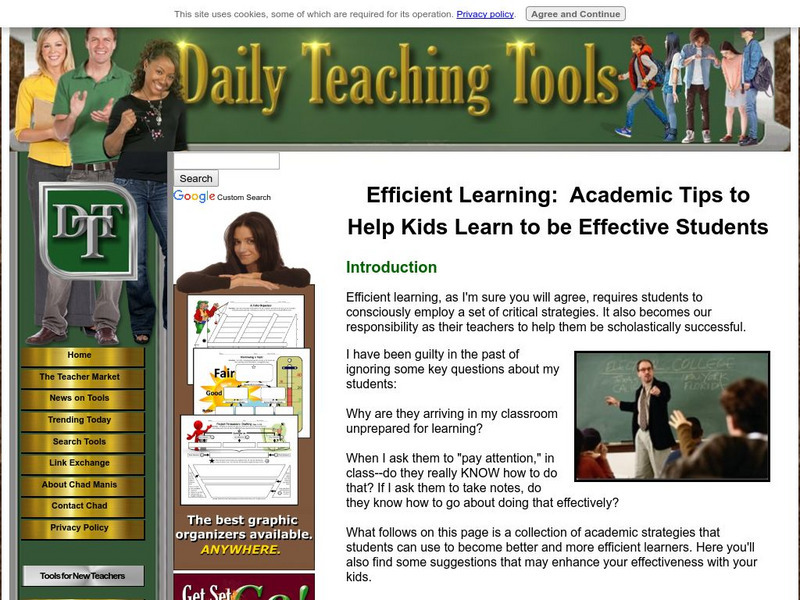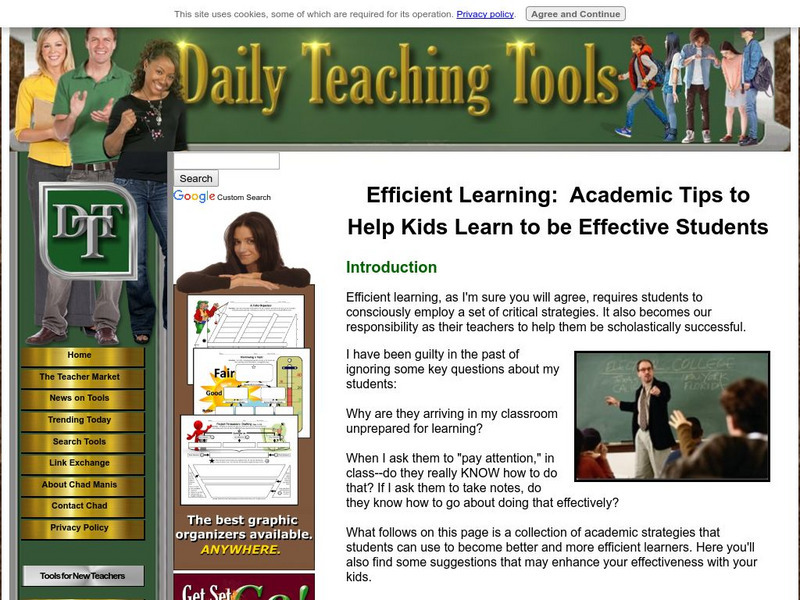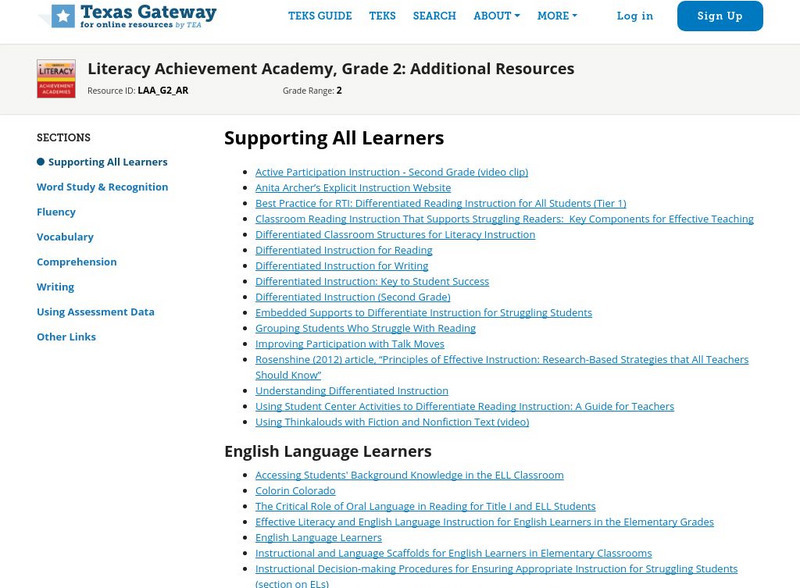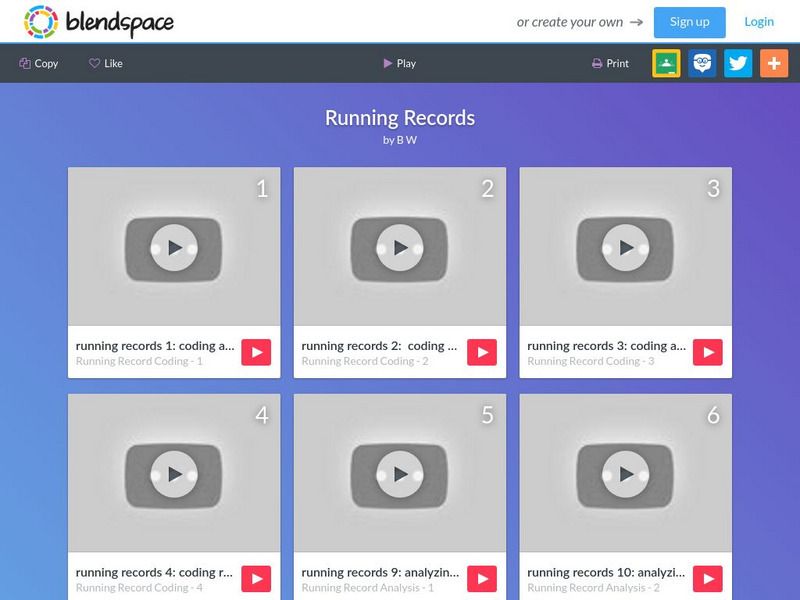Daily Teaching Tools
Daily Teaching Tools: Academic Tips to Help Kids Learn to Be Effective Students
A teaching resource with information and downloadable handouts on various study skills including the following: Coming to Class Prepared, Student Planers, Good Listening in Class, Taking Notes in Class, Using Acronyms to Remember...
Daily Teaching Tools
Daily Teaching Tools: Academic Tips to Help Kids Learn to Be Effective Students
A teaching resource with information and downloadable handouts on various study skills including the following: Coming to Class Prepared, Student Planers, Good Listening in Class, Taking Notes in Class, Using Acronyms to Remember...
Texas Education Agency
Texas Gateway: Literacy Achievement Academy, Grade 2: Additional Resources
This is a collection of links to teacher resources for teaching literacy to 2nd graders. It includes reading comprehension, word recognition, vocabulary, fluency, differentiated instruction, and using assessment data.
University of South Florida
Fcat Express: Cause & Effect Tree
Strategy to help learners recognize cause and effect relationships provided by a standardized test preparation site intended for fourth grade. Includes simple instructions and a visual.
TES Global
Blendspace: Running Records
Links to eleven websites, videos, charts, and activities that teach how to collect and interpret information from running records.
Other
Lesson Plan: Decoding: Context Activity
What does it mean to decode words in a context activity? Explore this lesson plan to find the answer to this question and more.
Library of Congress
Loc: Teachers: Personal Stories and Primary Sources
Students will explore the value of personal stories and first-hand accounts when exploring history, in this case, the events of the early twentieth century, which included World War I and the Great Depression. Through this five-unit...
Library and Archives Canada
Nlc: Defining Primary and Secondary Sources
Libraries and archives hold documents and books that can be used for your research projects. Learn how to divide and identify them into primary and secondary sources in this tutorial.







